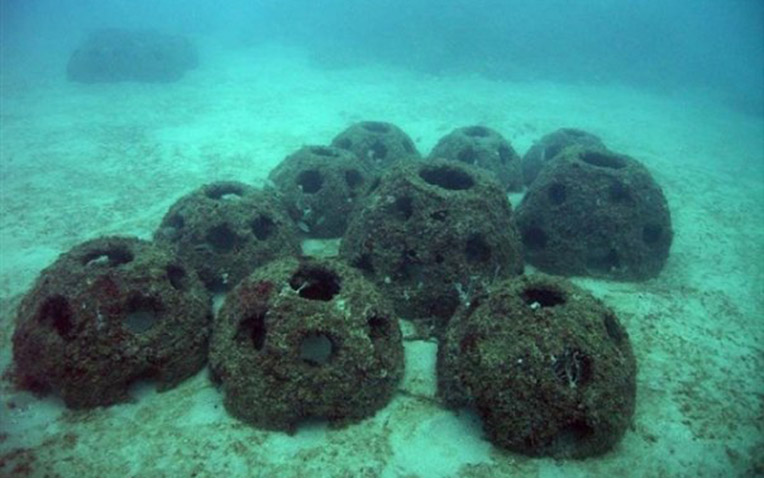What is a coral memorial?
Eternal Reefs is one major company pushing the coral memorial industry.
Eternal Reef’s idea is to create a permanent living legacy for lost loved ones by solidifying cremation ashes into concrete domes or ‘Reef Balls’ and sinking them to the ocean floor. When placed in reef-bound areas, coral polyps and tiny fish will eventually find a home within the dome.
Sounds cute, right? I’m privy to the idea of becoming a reef too, especially since artificial reefs appear the most likely solution for ensuring marine life can be sustained in the face of climate change.
Right now, ocean acidification and warming waters pose serious threats to centuries-old, naturally formed reefs. And as the climate crisis intensifies, humans will likely be farming heat-resistant corals onto man-made structures where fragile corals previously thrived.
But as we know, human intervention isn’t always what it claims to be. Dropping huge concrete (and ash) domes into the ocean has caused some speculation amongst environmentalists who are wondering if this endeavor is as eco-friendly as it sounds.

Is being turned into a reef ball a sustainable choice?
The rough-surfaced reef balls stand 1 metre high and 2 metres wide. They cost anywhere between £2,200 – 5,500, because ‘building a reef costs a lot of money,’ said a director from a second reef ball company, Neptune Memorial Reef.
Eternal Reefs has already distributed over 3,000 memorial domes off the cost of the US, all of which have responded well by growing corals and supporting small marine animals including crabs, urchins, and sponges.
In the UK, several companies are intrigued by the prospect of starting reef memorials off the coast of Dorset, but marine biologists and environmental charities have raised concerns as they look towards the bigger picture.
It’s no secret that cremation is terrible for the environment. A single body releases about 400kg of carbon dioxide once fully cremated. On top of this, creating reef balls mean the ashes need to be mixed with concrete – a material already responsible for 8 percent of global CO2 emissions annually.
At its current rate, the benefits of building coral memorials (i.e., sustaining ecosystems or creating entirely new ones) might be having a more positive impact on our natural environment than negative.
But it’s worth considering that if a large number of people start jumping on the reef ball bandwagon, we risk contributing to planetary heating through a whole new avenue.
Granted, many people will hate the idea, as there’s no real way to visit a lost loved one when they reside eternally at the bottom of the ocean. I guess we’ll have to wait and see how widespread the uptake of reef memorial balls really is.
In the meantime, perhaps we should focus more on means to achieve sustainable living – shall we?






















